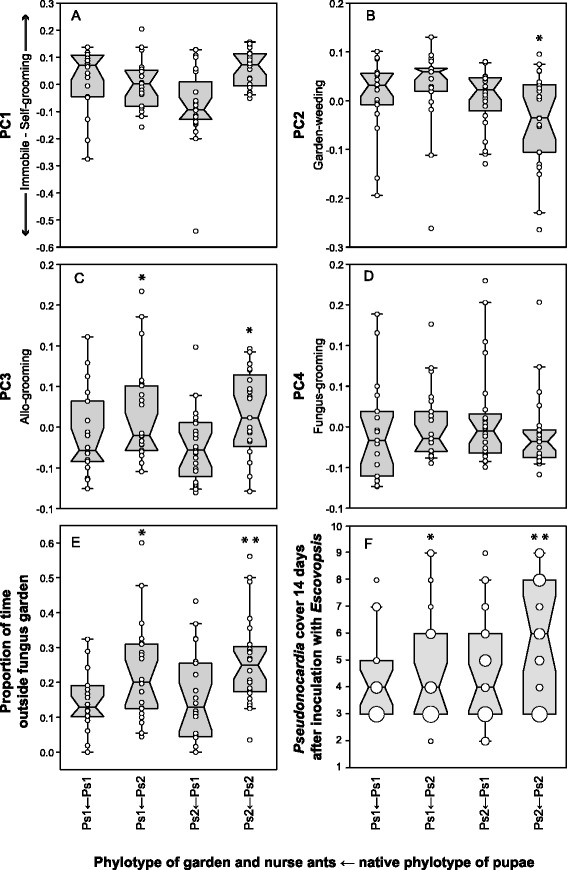Figure 3.

The effect of Pseudonocardia phylotype combination (in subcolonies composed of pupae and gardens/nurses with Ps1 or Ps2 in all four combinations) on behavioral profiles, usually defined as principal components (A - E, see text for details) and final cover (F). Box plots are drawn as in figure 2A. A. PC1 capturing the negatively correlated behaviors self-grooming (positive values) and immobile in the fungus garden (negative values). Workers with their native phylotype spent more time self-grooming, although this was not statistically significant after Bonferroni correction. B. PC2 showing fungus-grooming. Workers with Ps2 as their native phylotype, marked with an *, spend significantly less time fungus-grooming in Ps2 gardens than all others. C. PC3 showing allo-grooming. Workers with Ps2 as their native phylotype, marked with an *, spend significantly more time allo-grooming than all others. D. PC4 showing garden-weeding. There were no significant differences between phylotypes or their combinations. E. Time spent outside the fungus garden. Workers with Ps2 as their native phylotype, marked with an *, spend significantly more time outside. In addition to this overall difference, when they were reared in a Ps1 garden they spent significantly less time outside compared to when reared in a Ps2 garden, marked with **, but still more than workers with Ps1 as their native phyloptype. F. Final bacterial cover of cross-fostered ants estimated two weeks after infection with Escovopsis. There was a significant effect of Pseudonocardia phylotype and an interaction between pupal phylotype and fungus garden phylotype, so workers with Ps2 as their native phylotype reached a higher cover, marked with an *, especially in Ps2 gardens, marked with **. The size of the data points indicate the frequency of the cover index.
